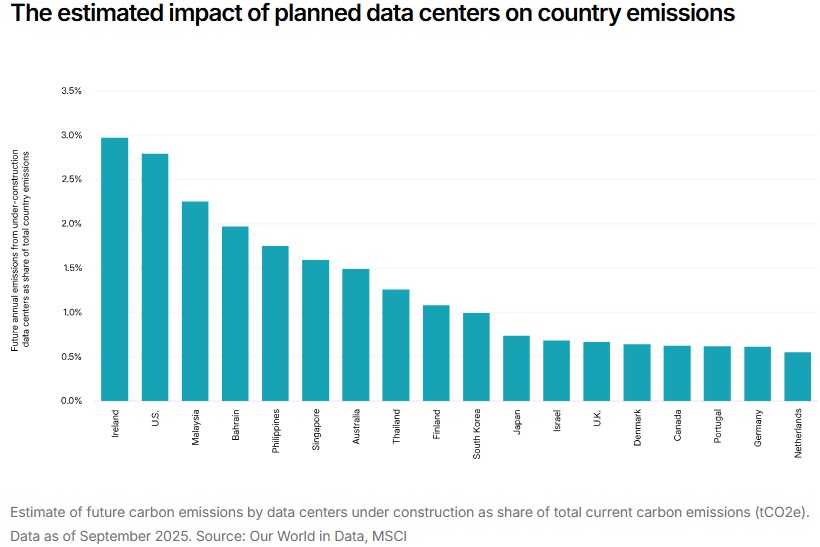
How will the boom in data centres construction impact carbon emissions?
New analysis shows country-based comparison of projected increases.
With new data centres being constructed globally, carbon emissions are projected to rise when the centres come online – the question is, potentially by how much?
Researchers at MSCI have this answer: "Using assumptions for power usage effectiveness and country-level grid emissions factors, and drawing on MSCI data, we estimate the new capacity currently under construction could add 0.7% to global carbon emissions, based on 2024 baselines."
In Ireland, where data centres accounted for 22% of electricity demand in 2024, the projected addition to national carbon emissions is as much as 2.9% of the country's total. In the US, the figure stands at around 2.6%.

"Additional carbon emissions are also notable for Malaysia and the Philippines, where international data-centre operators such as GDS Holdings Ltd and Blackstone-owned AirTrunk, hyperscalers (large cloud-service providers) like Amazon Web Services (AWS), and investors such as KKR have significant capacity under construction," MSCI reported.
"Globally, the largest hyperscalers – Meta Platforms Inc., Microsoft Corp., AWS, and Alphabet Inc. – account for much of the data-centre space currently under construction."
According to MSCI, more than 47 GW of additional data-centre capacity is currently under construction, with developers breaking ground on over 12 GW just in the first half of 2025.
Meanwhile, pointing to a dilemma, MSCI said: "The data-centre industry appears to be moving in a sustainable direction; however, the significant growth in data-centre capacity is outstripping the provision of renewable energy.
"This growth creates a dilemma for institutional capital: Can data centres align with net-zero investment frameworks, or are they at odds with the sustainability ambitions of institutional investors?"
It went on to state that achieving alignment with portfolio-level climate targets will require reliance on renewable procurement, efficiency improvements, or offsetting strategies.











